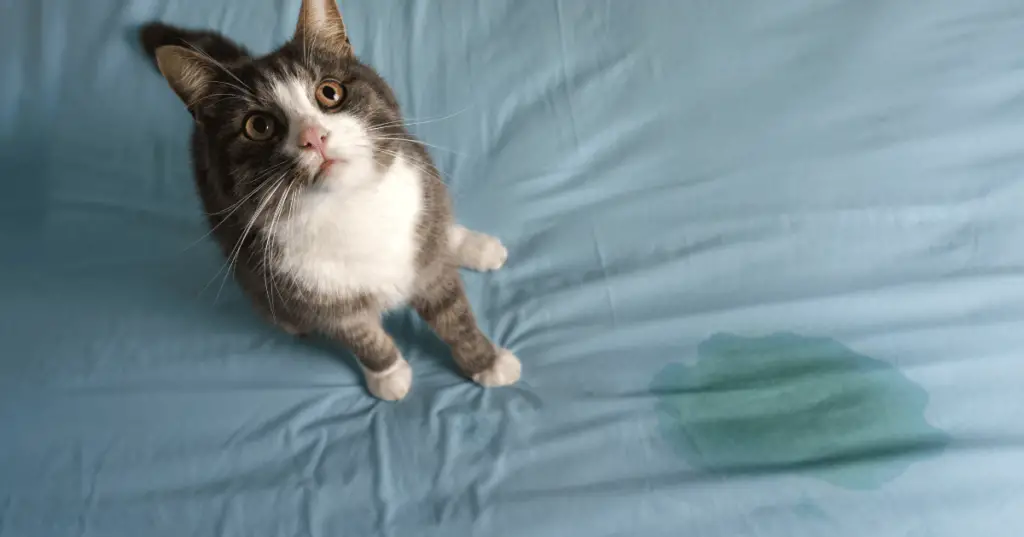Why Do Cats Groom Each Other: Understanding Allogrooming in Felines
Cats are fascinating creatures with an array of behaviors that often leave pet owners intrigued. One such behavior is mutual grooming, often referred to as allogrooming. While it’s common to see a cat grooming its own fur, observing two cats grooming each other can spark curiosity about the reasons behind this social interaction. This article delves into the intriguing world of feline allogrooming, exploring its origins, the benefits it provides, and also the potential drawbacks.
The Origins of Allogrooming
Allogrooming is a behavior that originates from the natural instincts of cats. In the wild, feline species cultivate social bonds within their colonies by grooming each other. This behavior is not limited to domestic cats (Felis catus); it extends to big cats like lions and tigers. The meticulous act of grooming another member of their group reinforces social hierarchies, provides comfort, and strengthens group cohesion.
Biological and Evolutionary Basis
From an evolutionary standpoint, mutual grooming serves several important purposes:
Hygiene
Cats are notoriously meticulous about their cleanliness. Grooming removes dirt, parasites, and dead skin cells. When cats groom each other, they can reach areas that are difficult to access by themselves, such as the back of the head and neck. This mutual assistance in cleanliness helps maintain overall health and reduces the risk of infections from parasites like fleas and ticks.
Social Bonding
Allogrooming is a major social activity among cats. It helps reinforce social bonds and hierarchies within a group. Just like humans use touch and other forms of non-verbal communication to maintain relationships, cats use grooming to show affection and reduce social tension. When two cats groom each other, it strengthens their bond, making them more likely to cooperate and live harmoniously.
Stress Reduction
Grooming generates a calming effect due to the release of endorphins. Engaging in mutual grooming can reduce stress and anxiety for both cats involved, fostering a peaceful environment. This can be particularly beneficial in multi-cat households, where stress levels can sometimes be elevated due to competition and territorial disputes.
Psychological and Social Dimensions
Affection and Trust
Similar to how humans use hugs and kisses to express affection, cats use grooming as a way to show love and trust. When one cat grooms another, it is a sign of deep trust and acceptance. This is often seen between mother cats and their kittens, but can also occur between non-related cats who have formed a strong bond.
Territory Marking
Cats possess scent glands, and grooming each other transfers their scents. This shared scent helps create a communal odor that is recognizable and comforting. This is particularly important in a household with multiple cats, as it establishes a unified territory.
Behavioral Observation
Cats learn from observation. Younger cats may watch and learn grooming techniques from older, more experienced cats. This educational aspect of allogrooming ensures that grooming practices are passed down through generations.
Pros of Cats Grooming Each Other
Enhanced Cleanliness
By grooming each other, cats can maintain a higher level of cleanliness. They can reach places that are hard to groom themselves, such as the top of the head and behind the ears.
Strengthened Bonds
Mutual grooming strengthens social bonds among cats. This can lead to a more harmonious household where cats are less likely to engage in aggressive behaviors.
Stress Relief
As mentioned earlier, grooming produces endorphins, which results in a calming effect. This can lower stress levels in cats, contributing to their overall well-being.
Health Benefits
Regular grooming can help detect health issues early, such as lumps, bumps, or skin conditions. This early detection can lead to prompt veterinary care and better health outcomes.
Cons of Cats Grooming Each Other
Spread of Parasites
While grooming can remove parasites, it can also inadvertently spread them between cats. If one cat is infested with fleas or ticks, grooming can transfer these parasites to other cats in the household.
Overgrooming
Sometimes, grooming can turn into overgrooming, leading to hair loss, skin irritation, and other dermatological problems. This can be a sign of stress or an underlying health issue that needs to be addressed.
Aggression
Not all grooming is affectionate. In some cases, dominant cats may use grooming to assert their dominance, which can lead to tension and aggression if the subordinate cat resists.
Allergies
Cats can have allergic reactions to each other’s saliva, resulting in itching and discomfort. This is rare but can be a concern in some multi-cat households.
Signs of Healthy Allogrooming
To ensure that mutual grooming is beneficial, it’s important to recognize the signs of healthy allogrooming:
- Relaxed Postures: Both cats should appear relaxed and comfortable. Ears should be in a neutral position, and neither cat should seem tense or aggressive.
- Voluntary Participation: Both cats should willingly engage in grooming each other. If one cat consistently initiates grooming and the other appears to be avoiding it, there may be an underlying issue.
- Balanced Interaction: The grooming should be reciprocal. If one cat is always the groomer and the other is always the recipient, it could indicate a dominance issue or an imbalance in their relationship.
When Allogrooming Becomes a Problem
While allogrooming is generally a positive behavior, there are times when it can become problematic. Recognizing these issues early can help address them before they escalate:
Overgrooming Due to Stress
If a cat is experiencing high levels of stress, it might engage in excessive grooming. Common stressors include changes in their environment, introduction of new pets, or alterations in their routine. Addressing the root cause of the stress can often help reduce overgrooming.
Parasite Infestation
As mentioned earlier, the spread of parasites is a significant concern. Regular veterinary check-ups and treatments can prevent infestations and keep all cats in the household healthy.
Dominance and Aggression
If one cat consistently uses grooming to assert dominance, it may lead to tension and fights. Observing their interactions closely and intervening when necessary can help mitigate aggressive behavior.
Enhancing the Allogrooming Experience
For those who own multiple cats, fostering a conducive environment for allogrooming can enhance their well-being. Here are some tips to encourage healthy grooming behaviors:
Provide Ample Resources
Ensure that each cat has its own set of resources—food bowls, litter boxes, and resting spots. This reduces competition and stress, leading to a more harmonious living environment.
Regular Veterinary Care
Routine check-ups can prevent health issues that might interfere with grooming. Vets can provide treatments for parasites, skin conditions, and other health concerns.
Create Enriching Environments
Providing toys, climbing structures, and cozy resting spots can keep cats mentally and physically stimulated. A well-enriched environment reduces stress and encourages positive interactions.
Supervise Introductions
When introducing a new cat to the household, do so gradually. Allow them to get used to each other’s scents before face-to-face meetings. Slow, supervised introductions can prevent aggression and facilitate bonding.
Understanding Individual Preferences
Just like humans, cats have varying personalities and preferences. Some may be more social and engage in allogrooming frequently, while others might prefer minimal contact. Respecting these individual differences is crucial for their well-being.
Observing Body Language
Pay attention to your cats’ body language. If a cat seems uncomfortable or tries to move away during grooming, it’s important to respect their space. Forcing interaction can lead to stress and potential aggression.
Encouraging Positive Associations
Use treats and positive reinforcement to create pleasant associations with grooming. This can help cats feel more comfortable and willing to engage in mutual grooming sessions.
Behavioral Intervention
If you notice problematic grooming behaviors, seeking the help of a feline behaviorist can be beneficial. They can provide insights and strategies to address issues and improve the overall social dynamics among your cats.
Case Studies: Real-Life Examples
Understanding the various aspects of allogrooming can be further enriched by looking at real-life examples. Here are a few case studies that illustrate different scenarios involving allogrooming:
Case Study 1: Max and Bella
Max and Bella are two domestic short-haired cats living in the same household. Initially, Max seemed indifferent towards Bella. However, after a few months, they began grooming each other. This change occurred after they started sharing a favorite cozy spot by the window. Sharing this space helped build trust and strengthened their bond.
Case Study 2: Leo and Tiger
Leo and Tiger are siblings who have groomed each other since they were kittens. However, as they grew older, Leo developed a skin allergy, causing Tiger’s saliva to irritate his skin. Once the allergy was diagnosed, their owner adjusted their grooming routines by monitoring them and applying a topical treatment to Leo’s skin. This allowed them to continue their grooming habits without causing discomfort.
Case Study 3: Luna and Shadow
Luna and Shadow were introduced as adults. Luna, being the more territorial cat, initially resisted Shadow’s presence. However, by gradually introducing them and using shared play sessions, their owner successfully eased the tension. Today, they groom each other regularly, signifying a well-established bond.
Conclusion
Allogrooming is a multifaceted behavior that plays a crucial role in the social dynamics, health, and well-being of cats. From reinforcing bonds and reducing stress to maintaining cleanliness and early detection of health issues, mutual grooming offers numerous benefits. However, it’s essential to be aware of the potential downsides such as the spread of parasites, overgrooming, and aggression. By understanding the reasons behind allogrooming and implementing strategies to foster healthy grooming behaviors, cat owners can ensure that their feline companions live happy, harmonious lives.
FAQs About Allogrooming
To further clarify and address common questions about cat grooming behaviors, let’s dive into some frequently asked questions:
1. Why do cats sometimes groom each other and then suddenly fight?
A sudden shift from grooming to fighting can be due to overstimulation. Cats’ grooming behavior can sometimes trigger play or dominance behavior. Observing their body language closely and intervening early can help prevent these altercations.
2. Is it normal for my cats to groom each other less often as they age?
Yes, it’s normal for grooming behaviors to change over time. Older cats might be less active and therefore may groom each other less frequently. However, a significant reduction could also indicate health issues, so it’s wise to consult a vet if you notice drastic changes.
3. Can cats groom each other too much?
Yes, excessive grooming, or overgrooming, can lead to skin problems and hair loss. This behavior might be a sign of stress, allergies, or other underlying health issues. It’s important to monitor your cats and seek veterinary advice if overgrooming occurs.
4. How can I encourage my cats to groom each other?
Providing a stress-free environment, enriching their surroundings with toys and climbing structures, and ensuring they have their own resources can help encourage mutual grooming. Positive reinforcement, such as treats and praise when they groom each other, can also promote this behavior.
5. Should I intervene if my cats are grooming each other aggressively?
If the grooming turns aggressive, it might be necessary to intervene to prevent injury. Separating them temporarily and redirecting their attention with toys or treats can help diffuse the situation. Consulting a feline behaviorist can provide additional strategies to manage aggressive grooming.
Resources for Further Reading
For those interested in delving deeper into feline behavior and allogrooming, here are some recommended resources:
Books
- “Cat Sense: How the New Feline Science Can Make You a Better Friend to Your Pet” by John Bradshaw
- “The Domestic Cat: The Biology of its Behaviour” edited by Dennis C. Turner and Patrick Bateson
- “Think Like a Cat: How to Raise a Well-Adjusted Cat” by Pam Johnson-Bennett
Websites
- International Cat Care – Offers in-depth articles on cat behavior and health.
- The American Association of Feline Practitioners (AAFP) – Provides guidelines and resources on feline health.
- Jackson Galaxy’s Cat Mojo – Offers tips and insights on cat behavior from a renowned cat behaviorist.
Organizations
- ASPCA (American Society for the Prevention of Cruelty to Animals)
- The Humane Society
- The Cat Fanciers’ Association (CFA)
Engaging with Your Cats
Owning cats involves understanding their behaviors and creating an environment that meets their physical and emotional needs. Here are some practical tips for fostering a healthy relationship with your cats:
Observation
Spend time observing your cats’ interactions. Recognize the signs of healthy grooming and address any concerns early. Subtle changes in behavior can often be the first indicators of health or social issues.
Playtime
Engaging your cats in regular play sessions can help reduce stress and build trust. Use interactive toys like feather wands, laser pointers, and puzzle feeders to keep them mentally and physically stimulated.
Routine
Cats thrive on routine. Keeping a consistent schedule for feeding, playtime, and grooming can reduce anxiety and promote a stable environment.
Safe Spaces
Provide each cat with its own safe space where it can retreat and relax without being disturbed. This helps reduce tension and fosters a sense of security.
Veterinary Care
Regular veterinary check-ups are essential. These visits ensure any health issues are detected early and allow for timely interventions, keeping your cats healthy and happy.
Personal Stories and Testimonials
Here are a few anecdotes from cat owners that highlight the varied experiences of allogrooming:
Story 1: Tigger and Stripey
“I was amazed when I brought home Stripey, our new kitten, and saw how quickly our older cat, Tigger, took to grooming him. They spent hours licking each other, and it was clear that Tigger was showing affection and helping Stripey settle into his new home. Their bond grew strong, and it brought a lot of joy to our household.”
Story 2: Missy and Coco
“Missy and Coco had a rocky start, often getting into little fights. But over time, they began to groom each other. It was heartwarming to see their relationship transform from rivalry to friendship. Now, they are inseparable, and their grooming sessions are a daily routine that keeps them both content.”
Story 3: Simba and Nala
“We were concerned when Simba started overgrooming Nala, leading to patches of fur loss. A visit to the vet revealed that Simba was stressed due to a change in our home environment. With some adjustments and stress-relief activities, they resumed normal grooming behaviors, and we learned the importance of paying attention to their emotional health.”
Final Thoughts
Cats grooming each other is more than just a routine activity; it is a testament to their social intelligence and emotional depth. Understanding why cats engage in allogrooming allows pet owners to foster positive interactions and address potential issues early. By providing an enriched environment, regular veterinary care, and plenty of love and attention, cat owners can ensure their pets enjoy healthy, happy lives.
Allogrooming is a beautiful example of how cats communicate, nurture, and build relationships within their social groups. It highlights the importance of trust, affection, and mutual care in the feline world. As cat owners, recognizing and supporting these behaviors can lead to a more harmonious and fulfilling relationship with our furry friends.
Whether you are a seasoned cat owner or new to the world of felines, appreciating the nuances of allogrooming can deepen your connection with your pets. So, the next time you see your cats grooming each other, you’ll know that it’s more than just a grooming ritual—it’s an expression of their bond and an integral part of their social lives.



